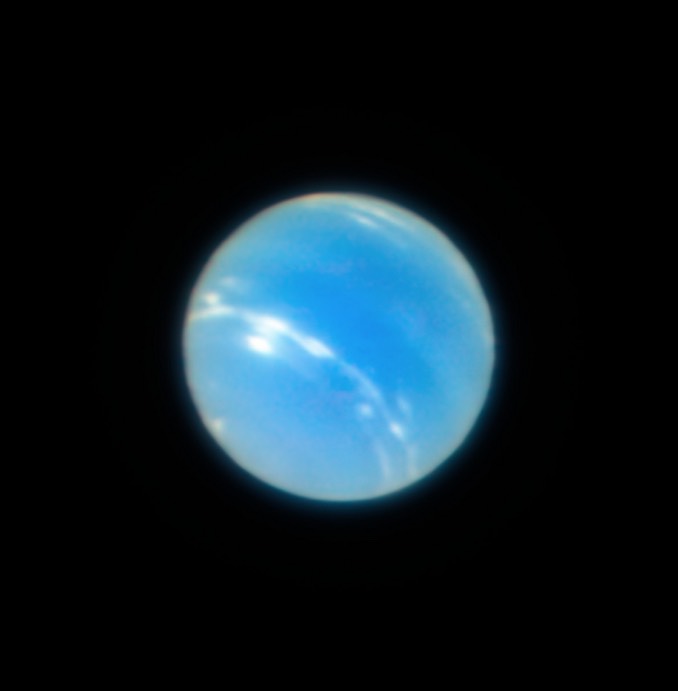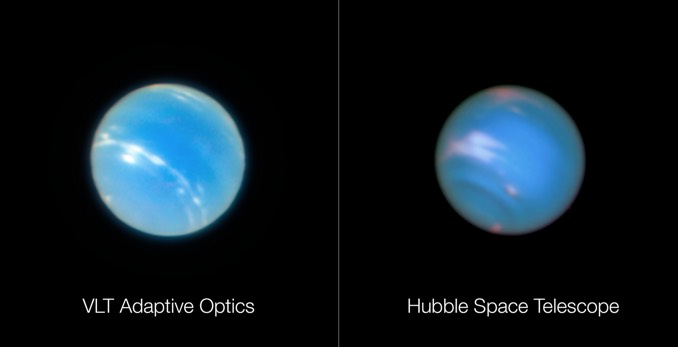
The European Southern Observatory’s Very Large Telescope, using new adaptive optics technology known as laser tomography, has captured super-sharp test images of Neptune and other targets by correcting for turbulence at different altitudes in the atmosphere.
The resulting images, shot with the MUSE instrument and the GALACSI adaptive optics system, rival or exceed the sharpness of similar images from the Hubble Space Telescope. That level of clarity coupled with the spectroscopic capabilities of MUSE “will enable astronomers to study the properties of astronomical objects in much greater detail than was possible before,” ESO said in a news release.
Shooting in wide-field mode, MUSE and GALACSI can overcome the effects of atmospheric turbulence occurring up to a kilometre (0.62 miles) above the VLT. But the new narrow-field view uses the laser tomography technique to compensate for disturbances at virtually any altitude.

The adaptive optics system relies on four bright lasers attached to the VLT-4 telescope that shoot 30-centimetre-wide orange beams into the sky that stimulate sodium atoms in the atmosphere, creating artificial guide stars. The light from these “stars” is then analyzed to determine how it is being distorted by passage through the atmosphere. Commands to precisely counteract that distortion are sent to a deformable secondary mirror that constantly changes shape to eliminate the blurring.
“This new mode … constitutes a major step forward for the ESO’s Extremely Large Telescope, which will need Laser Tomography to reach its science goals,” ESO said in its release. “These results on UT4 with the AOF will help to bring ELT’s engineers and scientists closer to implementing similar adaptive optics technology on the 39-metre giant.”



